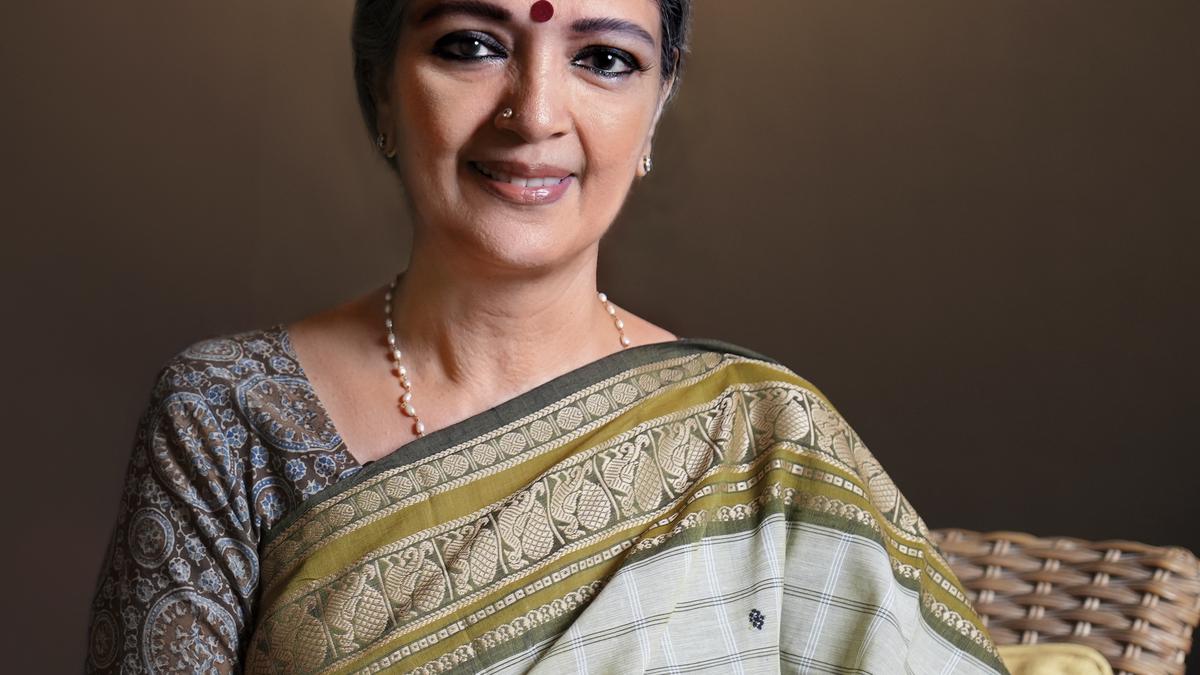
‘Embracing change is the defining quality of a good artiste,’ says Vasanthalakshmi
The Hindu
Vasanthalakshmi’s life in natya
A spotlight comes on stage, and there sits a meditative Vasanthalakshmi, ready to begin the incredibly complex Simhanandana tala. The next three avartanams of this 128-beat tala take the audience on a surreal journey with the performers.
Music and poetry has always played a significant role in Vasanthalakshmi’s life. Born in Kanigiri, Andhra Pradesh, on her maternal side, she belongs to the lineage of Vennelaganti Soorana, a royal poet of the Nellore Samsthanam. Her paternal great-grandfather was so adept at explaining the nuances of the Ramayana that the family earned the sobriquet ‘Ramayanam’.
Her mother Indira, a trained Carnatic singer and violinist, and father Prakasa Rao recognised and encouraged their daughter’s deep passion for dance and music.
Vasanthalakshmi’s journey in dance began at the age of six under the guidance of S. Bhoopal and T.V. Narasimhulu, who conducted her Bharatanatyam arangetram on October 23, 1966. Soon, guru Adyar K. Lakshman introduced her to a methodical and systematic training process, encouraging her to question and understand before accepting anything. A few years later, in 1969, Vasanthalakshmi became the partner in life and on stage to her next guru M.V. Narasimhachari.
Together, Vasanthalakshmi and Narasimhachari have enthralled audiences in India and abroad with their fine technique, challenging laya patterns, communicative abhinaya, and original choreography.
A gifted linguist, lyricist and a nattuvanar, Vasathalakshmi is known for her perfect diction of complex rhythmic syllables. She has to her credit, several sabdams, padams, varnams and mangalams. Among her critically acclaimed varnams are the one in Shanmukhapriya in khanda nadai Adi tala on Subrahmanya and the other set to Keeravani on Krishna, for which she also composed the music. She is also a proficient vainika who learnt from vidushi Kamala Aswathama.
Vasanthalakshmi’s expertise with the Simhanandana Tala Chitra Nrithyam in which the dancer draws the image of a lion with her feet has won her critical acclaim.

 Run 3 Space | Play Space Running Game
Run 3 Space | Play Space Running Game
 Traffic Jam 3D | Online Racing Game
Traffic Jam 3D | Online Racing Game
 Duck Hunt | Play Old Classic Game
Duck Hunt | Play Old Classic Game


